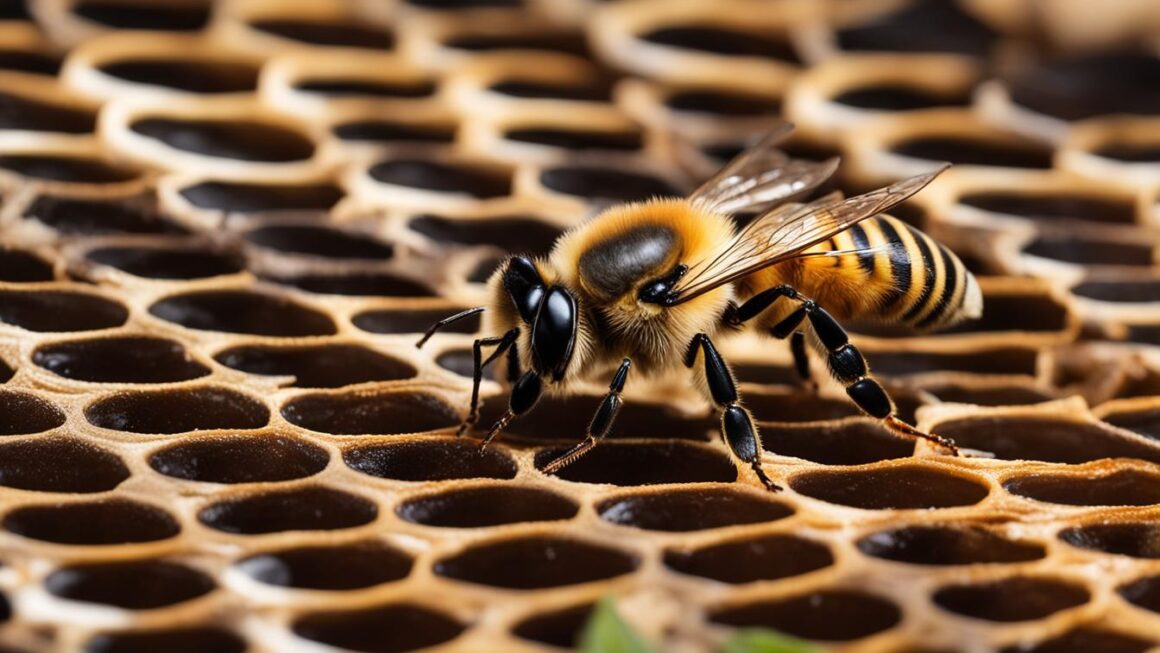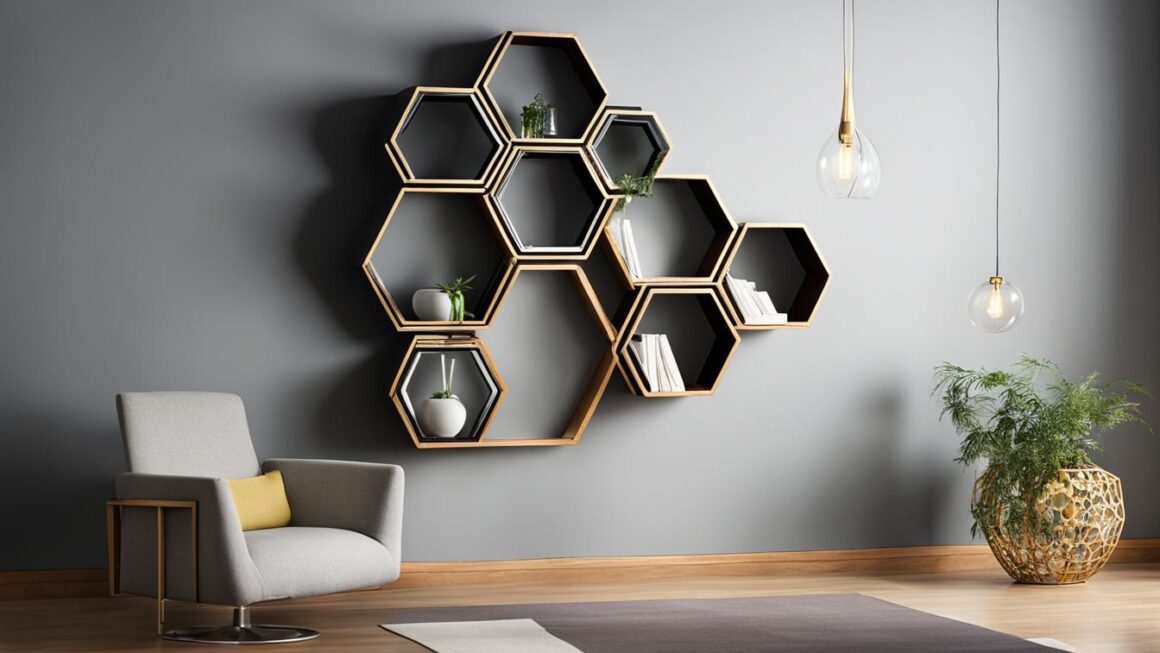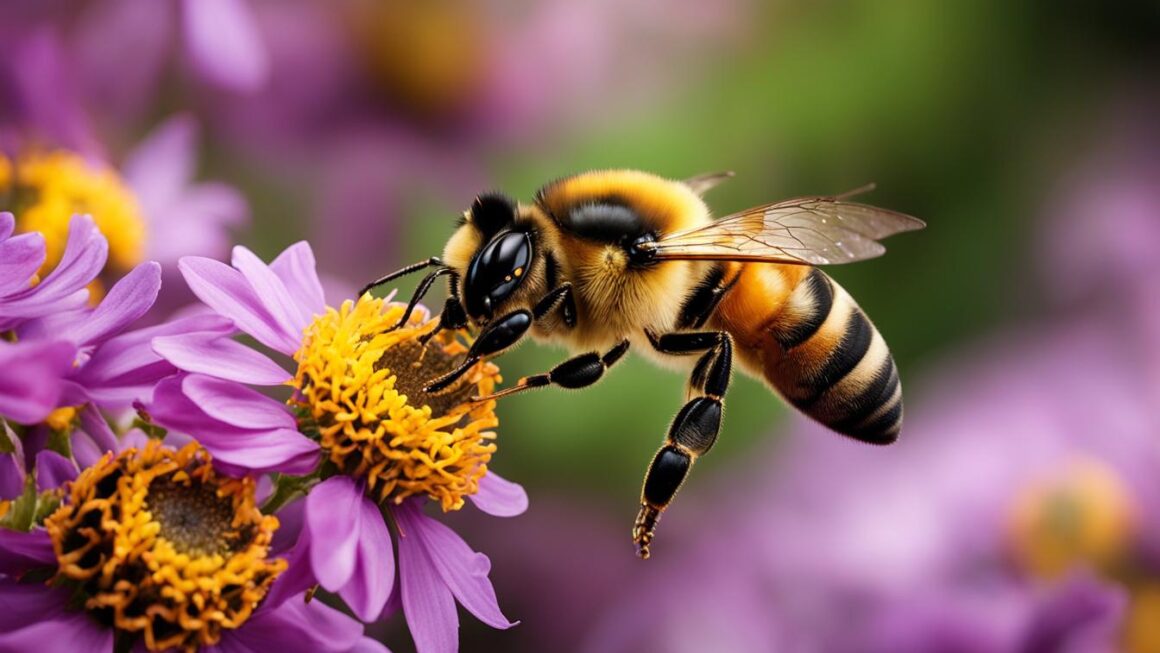Are you a beekeeper looking to master the art of finding the elusive queen bee in your hive? Look no further! In this article, we will provide you with essential tips and techniques to help you locate and identify the queen bee. Whether you are a beginner or an experienced beekeeper, developing the skill of spotting the queen bee can boost your confidence and ensure the health and productivity of your hive.
When it comes to queen bee identification, it’s important to go beyond just looking at color. While queens can come in a range of colors, they can be distinguished by their physical appearance, including a long abdomen and distinct shape. Understanding these distinguishing features will be the key to successfully finding the queen bee in your hive.
Observing the movement and behavior of the queen bee can also provide valuable clues. The queen bee moves with purpose and can create a visual break in the hive’s pattern as she charges through the worker bees. By understanding her movement and behavior, you can improve your chances of spotting her among the busy worker bees.
So, if you’re ready to enhance your beekeeping skills and become a pro at finding the queen bee, read on for our expert tips and techniques!
Key Takeaways:
- Master the skill of finding the queen bee to boost your beekeeping confidence.
- Look beyond color and focus on the physical appearance, movement, and behavior of the queen bee for identification.
- Spotting the queen bee can be challenging, but regular practice and observation will improve your skills.
- Use techniques such as starting from the uppermost box, examining each side of the frame, and observing the brood nest to increase your chances of finding the queen bee.
- Consider marking the queen bee with different colors to easily identify her in the hive and track her age.
The Physical Appearance of the Queen Bee
The queen bee has a unique physical appearance that sets her apart from other bees in the hive. While she is only slightly larger than a worker bee, her distinguishing features make her easy to identify with practice. Understanding the physical characteristics of the queen bee is crucial for beekeepers to accurately locate her in the hive.
The queen bee’s most noticeable feature is her long abdomen, which distinguishes her from the shorter abdomens of worker bees. Additionally, her back is shiny black, providing a contrast to the worker bees’ more muted coloration. These physical traits, along with her slightly larger size, make the queen bee stand out amidst the sea of worker bees.
However, it is important to note that identifying the queen bee based solely on color can be misleading. Queens can come in a range of colors, and relying solely on color for identification purposes can lead to confusion. Instead, beekeepers should focus on the queen’s distinct shape, movement, and behavior to accurately locate her in the hive.
| Distinguishing Features of the Queen Bee |
|---|
| Long abdomen |
| Shiny black back |
| Slightly larger size compared to worker bees |
By understanding the physical appearance and features of the queen bee, beekeepers can develop their skills in spotting her within the hive. This knowledge, combined with the observation of movement, behavior, and other factors, can enhance beekeeping confidence and contribute to the effective management of bee colonies.
Color and Queen Bee Identification
One common misconception among beekeepers is that the color of a queen bee can be used as a reliable factor for identification. However, the color alone is not a foolproof method for determining the queen bee in a hive. Queen bees can exhibit a range of colors, including shades of yellow, gold, brown, and even black. Relying solely on color can lead to confusion and misidentification.
When it comes to identifying the queen bee, it is essential to look beyond color and focus on other distinguishing features. One such feature is the shape of the bee. The queen bee has a longer abdomen compared to worker bees, giving her a distinct appearance. Observing the shape and size of the bee can provide valuable clues in identifying the queen.
Another factor to consider is the behavior of the bee. The queen bee moves differently from worker bees, often with purpose and determination. She may charge through the crowd of worker bees, creating a noticeable break in the pattern of the hive. By observing the movement and behavior of the bees, beekeepers can increase their chances of locating the queen.
| Feature | Queen Bee | Worker Bee |
|---|---|---|
| Color | Range of colors | Range of colors |
| Abdomen | Longer | Shorter |
| Movement | Determined, purposeful | Varies |
In summary, while color can be a factor in queen bee identification, it is not the sole determining factor. Beekeepers must look beyond color and consider other features such as shape, movement, and behavior to accurately identify the queen bee in a hive.
Recognizing the Movement and Pattern of the Queen Bee
Spotting the queen bee in a hive requires a keen eye for her distinctive movement and the pattern she creates. The queen bee moves with purpose, often charging through the worker bees, creating a visual break in the usual pattern of the hive. This movement can be a helpful clue when trying to locate the queen among the other bees.
Observing the pattern created by the queen bee can also aid in her identification. While worker bees move in a somewhat random and scattered manner, the queen bee’s movement tends to follow a more deliberate path. She may move in a straight line or in a circular motion, as she inspects the cells and lays eggs. By observing the movement and pattern in the hive, beekeepers can increase their chances of spotting the queen bee.
It’s important to note that the movement and pattern of the queen bee can vary depending on the colony’s size and activity level. In larger colonies, the queen’s movement may be more difficult to discern among the sheer number of bees. In contrast, in smaller colonies, her movement and pattern may be more obvious due to the lower bee population.
| Movement of Queen Bee | Pattern in the Hive |
|---|---|
| The queen bee moves with purpose and can charge through worker bees. | The queen bee’s movement creates a visual break in the pattern of the hive. |
| The queen may move in a straight line or follow a circular path while inspecting cells. | The queen’s pattern tends to be more deliberate compared to the scattered movement of worker bees. |
| The movement and pattern of the queen bee may vary depending on colony size and activity level. | In larger colonies, the queen’s movement may be more difficult to discern. |
By recognizing the movement and pattern of the queen bee, beekeepers can improve their ability to locate and identify her in the hive, allowing for better management and care of their bee colonies.
Understanding the Behavior of the Queen Bee
Beekeepers looking to find the queen bee in their hive should focus their search on the nursery. This is where the queen primarily resides, laying her eggs and ensuring the colony’s future generations. By concentrating on the brood frames, especially those with new eggs, beekeepers can increase their chances of locating the queen successfully. However, it’s important to be quick and gentle during the inspection, as the colony may become disturbed and the queen might hide.
The behavior of the queen bee can offer valuable clues in finding her. When searching through the hive, beekeepers should pay attention to the movement patterns and disruptions she creates among the worker bees. The queen moves with purpose and can break the visual pattern of the hive as she swiftly passes through her subjects. By observing and understanding the behavior of the queen bee, beekeepers can more effectively spot her among the bustling hive.
| Behavior of the Queen Bee | Finding the Queen Bee in the Nursery |
|---|---|
| Quick movements | Focus on brood frames with new eggs |
| Creates disruptions in the hive | Be quick and gentle during inspection |
| Moves with purpose | Observe movement patterns and disruptions |
Understanding the behavior of the queen bee is key to successful queen spotting. Developing this skill takes time and practice, but it can significantly enhance a beekeeper’s ability to manage their hive effectively. By paying attention to the nursery and the behavior of the queen bee, beekeepers can ensure the health and productivity of their colonies.
Practicing the Skill of Spotting the Queen Bee
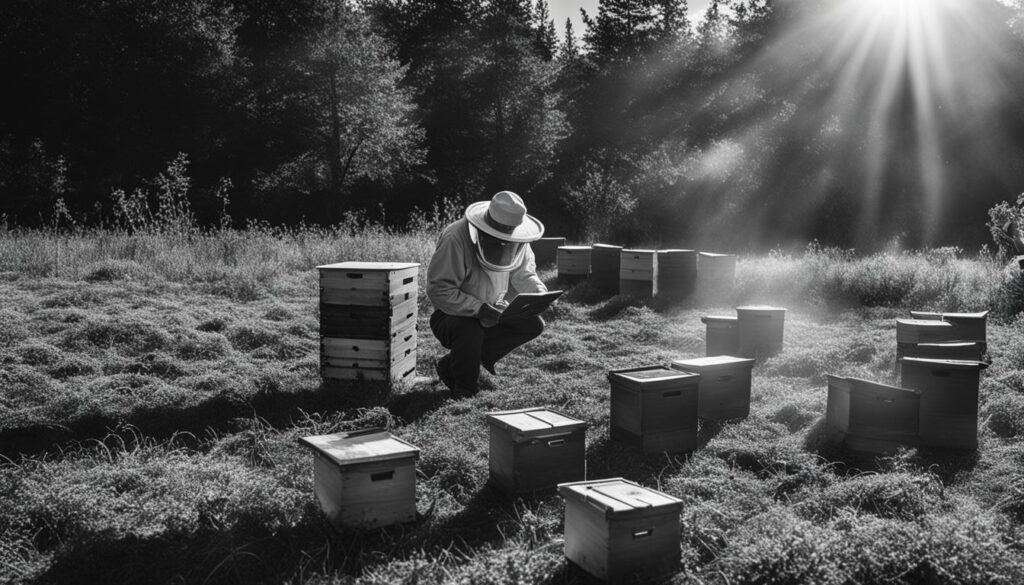
Spotting the queen bee in a hive is a skill that requires practice and a keen eye for detail. Beekeepers can develop their queen spotting skills by regularly inspecting their hives and creating opportunities for practice. One fun way to improve this skill is by playing a game called Queenspotting, where beekeepers try to locate the queen bee among a sea of worker bees.
During hive inspections, beekeepers should focus on observing the physical characteristics, movement, and behavior of the queen bee. By paying attention to her distinct appearance, such as her long abdomen and shiny black back, beekeepers can quickly identify her in the hive. Additionally, observing the movement and pattern created by the queen bee as she moves through the worker bees can help beekeepers spot her more easily.
Developing the skill of spotting the queen bee takes time and patience. Beekeepers should take advantage of every opportunity to practice their queen spotting skills and refine their ability to identify the queen amidst the hive. With practice, beekeepers can become more confident in their ability to find the queen bee, ensuring the health and productivity of their colonies.
Benefits of Practicing Queen Bee Spotting
- Increased confidence in hive management
- Early identification of potential issues or swarming behavior
- Ability to monitor the health and productivity of the queen bee
- Improved understanding of hive dynamics and behavior
| Practice Tips | Benefits |
|---|---|
| Regularly inspect your hives | Gain familiarity with the appearance and behavior of the queen bee |
| Play the game Queenspotting | Improve speed and accuracy in spotting the queen bee |
| Attend beekeeping workshops or classes | Learn from experienced beekeepers and gain valuable insights |
Tips for Finding the Queen Bee
Spotting the queen bee in a hive can be a challenging task for beekeepers, but with the right techniques and tips, it becomes easier to locate her. Here are some helpful suggestions to improve your queen bee spotting skills:
- Start from the uppermost box and work your way down: By beginning your search from the top box and systematically moving downwards, you increase the likelihood of finding the queen bee. This approach allows you to inspect each frame thoroughly and gives you a better chance of spotting her.
- Examine each side of the frame for a few seconds: Take your time to observe both sides of the frame, paying close attention to any movement or differences in appearance. The queen bee may stand out due to her unique shape, movement, or behavior.
- Look for signs of eggs on the frame: The presence of eggs is a strong indication that the queen bee has recently been on that particular frame. Scan carefully for tiny white eggs in the cells, as this is a clear sign that the queen has been active.
- Focus on the center of the brood nest: The queen bee tends to spend most of her time in the center of the brood nest, where she lays eggs. Concentrate your search in this area to increase your chances of finding her.
Using these tips can greatly assist in finding the queen bee within your hive. Remember to be patient and observant, as spotting the queen may require practice and a keen eye for detail. By honing your queen bee spotting skills, you can better manage your hive and ensure the health and productivity of your bee colony.
| Tip | Description |
|---|---|
| Start from the uppermost box and work your way down | Inspect each frame thoroughly, starting from the top, to increase your chances of finding the queen bee. |
| Examine each side of the frame for a few seconds | Take your time to observe both sides of the frame, paying close attention to any movement or differences in appearance. |
| Look for signs of eggs on the frame | Scan the cells for tiny white eggs, which indicate recent activity by the queen bee. |
| Focus on the center of the brood nest | Concentrate your search in the central area of the brood nest, where the queen bee is most likely to be found. |
Marking the Queen Bee for Easy Identification
Marking the queen bee can be a helpful technique for beekeepers to easily identify her in the hive. By using different colors to mark queens based on the year they were introduced, beekeepers can track the age of the queen and plan for requeening in the future. This practice not only assists in visual identification but also aids in hive management and record-keeping.
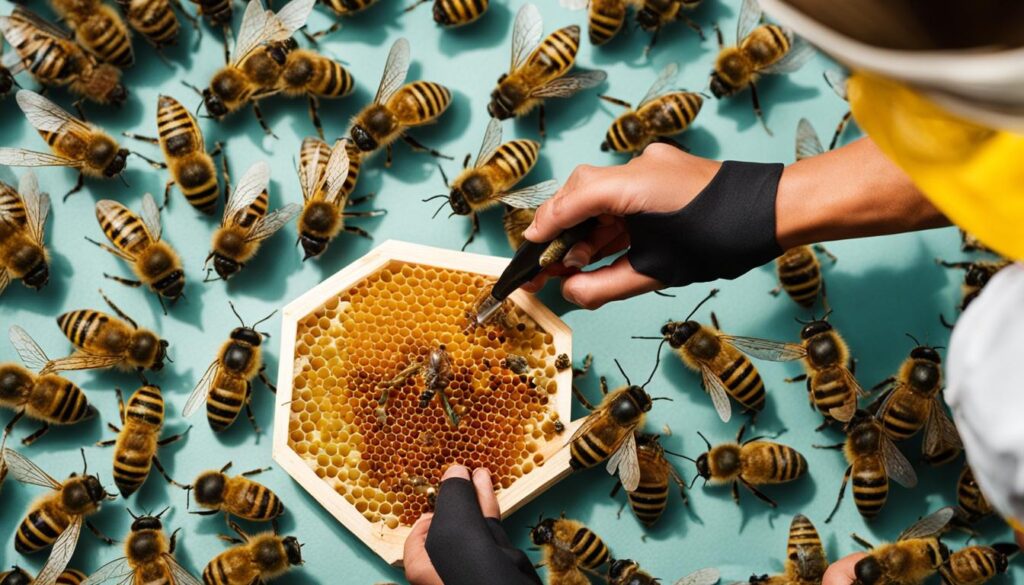
When marking the queen bee, it is important to handle her gently. A variety of marking colors can be used, with each color representing a specific year. For example, white might indicate a queen from 2021, blue for 2022, and so on. The marking should be done on the top of the thorax, using a non-toxic paint specifically designed for marking bees. It is essential to allow the paint to dry before releasing the queen back into the hive to avoid smudging or harming her.
Marking the queen bee not only simplifies identification but also provides valuable information about the age and history of the queen. It allows beekeepers to monitor the lifespan of the queen and make informed decisions regarding hive management. Additionally, marked queens can be advantageous during inspections, making it easier for beekeepers to locate the queen, especially for those new to beekeeping.
Benefits of Marking the Queen Bee:
- Easy visual identification in the hive
- Tracking the age of the queen and planning for requeening
- Improved record-keeping and hive management
- Helpful for new beekeepers to locate the queen during inspections
By marking the queen bee with different colors based on the year introduced, beekeepers can streamline hive management and enhance their beekeeping experience. It is an invaluable tool that allows for easy identification and provides essential information for maintaining healthy and productive colonies.
| Color | Year |
|---|---|
| White | 2021 |
| Blue | 2022 |
| Green | 2023 |
| Yellow | 2024 |
The Importance of Finding the Queen Bee for Hive Management
Finding the queen bee is a crucial task for beekeepers when it comes to effective hive management. The queen bee plays a pivotal role in the overall health and productivity of the colony. By locating the queen, beekeepers can ensure that she is healthy and laying eggs properly, which is essential for the growth and stability of the hive.
One of the key signs of a healthy queen bee is the presence of eggs, larvae, and capped brood with a consistent laying pattern. When beekeepers observe these signs, it indicates that the queen is actively performing her duties and the hive is thriving. Regularly finding and monitoring the queen bee allows beekeepers to assess the health of the colony and take necessary actions to maintain its well-being.
“By locating the queen, beekeepers can ensure that she is healthy and laying eggs properly, which is essential for the growth and stability of the hive.”
Additionally, finding the queen bee can help beekeepers identify potential issues or challenges within the hive. If the queen bee is not present or is showing signs of illness or aging, it may be necessary to consider requeening the colony to maintain its vitality. Beekeepers can also use the presence or absence of the queen to determine the overall strength and population of the hive, making informed decisions about hive expansion or splitting.
| Signs of a Healthy Queen Bee | Potential Issues |
|---|---|
| Consistent laying pattern | Queen absence or illness |
| Evidence of eggs, larvae, and capped brood | Aging queen |
| Active and robust colony growth | Weak colony population |
In summary, locating the queen bee is of utmost importance for effective hive management. It allows beekeepers to assess the health and productivity of the colony, identify potential issues, and make informed decisions about the future of the hive. By understanding the signs of a healthy queen bee and regularly finding her, beekeepers can ensure the success of their beekeeping endeavors.
Conclusion
In conclusion, finding the queen bee in a hive is a valuable skill for beekeepers. By understanding the physical appearance, movement, and behavior of the queen bee, beekeepers can accurately identify her amidst the other bees. It’s important to look beyond color and focus on shape, movement, and behavior when attempting to locate the queen bee.
Practicing the skill of spotting the queen bee is essential for beekeepers to become confident in their ability to find her. Regularly inspecting the hives and playing games like Queenspotting can help beekeepers develop and refine their queen spotting skills.
Additionally, utilizing techniques such as starting from the uppermost box, examining each side of the frame, and looking for signs of eggs can significantly increase the chances of spotting the queen bee. Marking the queen bee with different colors based on the year she was introduced to the hive can also make her easier to identify.
By finding the queen bee, beekeepers can ensure her health and proper egg-laying, which is crucial for effective hive management. Understanding the importance of finding the queen bee and implementing techniques and observations can help beekeepers maintain healthy and productive colonies.
FAQ
Can a queen bee be identified by her color?
No, relying solely on color for queen bee identification can be misleading. It’s important to look beyond color and focus on other distinguishing features, such as shape and behavior.
How can I distinguish the queen bee from other bees in the hive?
The queen bee can be distinguished by her physical appearance, including a long abdomen and distinct shape. She also moves with purpose and can create a visual break in the pattern of the hive.
Where can I usually find the queen bee in the hive?
Queens are primarily found in the nursery of the hive, where they lay eggs. Beekeepers should focus their search on the brood frames, especially those with new eggs.
How can I improve my skill of spotting the queen bee?
Practices such as playing games like Queenspotting or regularly inspecting your hives can help you develop the skill of spotting the queen bee.
What are some tips for finding the queen bee?
Start from the uppermost box and work your way down, examine each side of the frame for a few seconds, and look for signs of eggs on the frame. Also, observe the hive location and focus on the center of the brood nest.
How can I make the queen bee easier to identify?
Beekeepers can mark the queen bee with different colors based on the year they were introduced to the hive. This helps track the age of the queen and plan for requeening in the future.
Why is finding the queen bee important for hive management?
By locating the queen, beekeepers can ensure that she is healthy and laying eggs properly. Signs of a healthy queen include seeing eggs, larvae, and capped brood with a consistent laying pattern.

